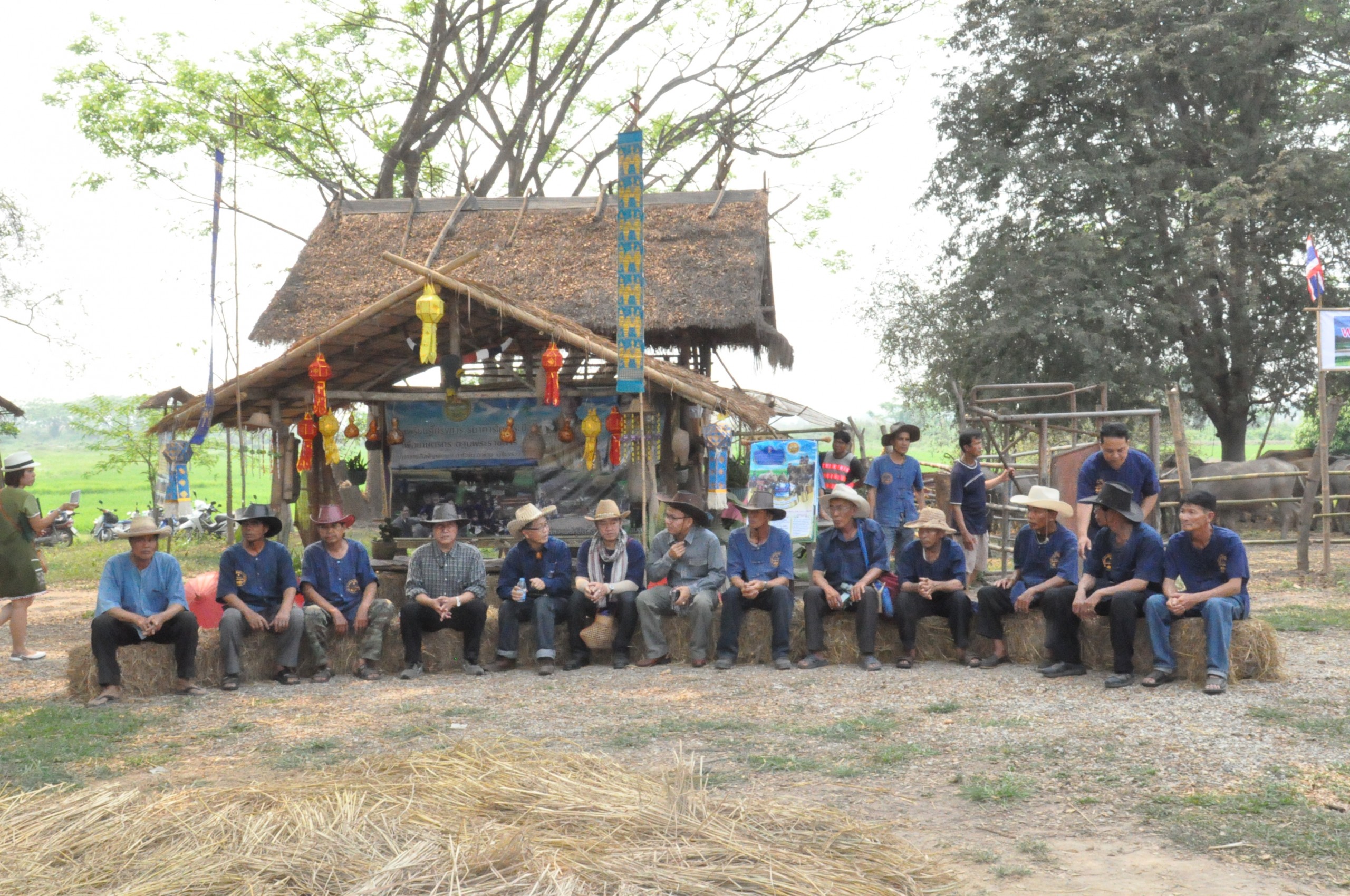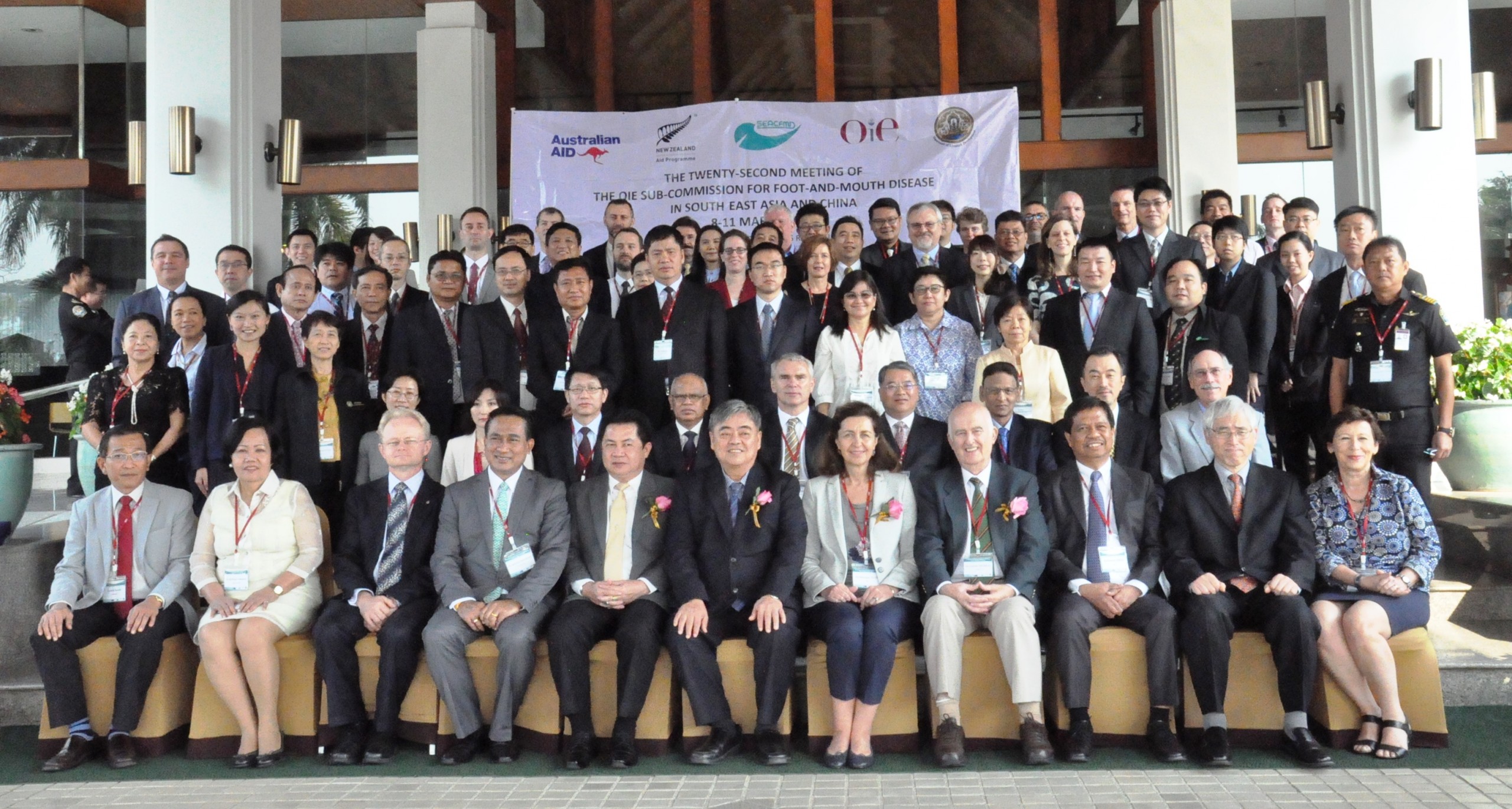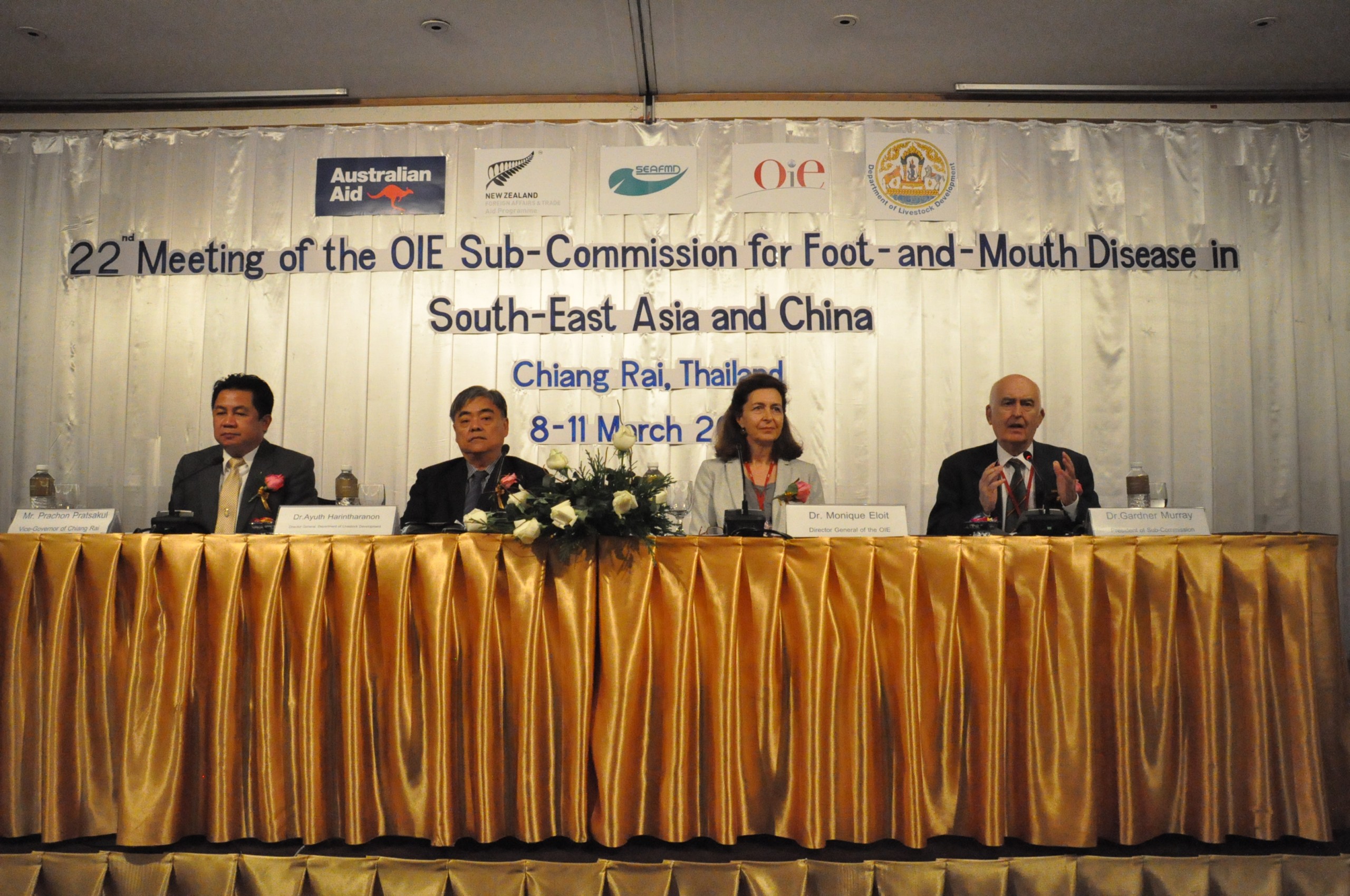The 22nd Meeting of the OIE Sub-Commission for FMD in South-East Asia and China was held in Chiang Rai, Thailand, on 8-11 March 2016, and attended by around 90 participants, including attendees from SEACFMD Member Countries, representatives of key partners, OIE World and Regional Reference Laboratories, and OIE staff from Headquarters, the Regional Representation for Asia and the Pacific, the Sub-Regional Representation for South-East Asia, as well as Sub-Regional FMD Coordination Unit Office in Astana.
The meeting was opened by Mr Prachon Pratsakul, Vice-Governor of Chiang Rai Province, who welcomed participants to Chiang Rai, and highlighted the socio-economic importance of controlling FMD in Chiang Rai Province. Dr Monique Eloit, Director-General of the OIE, and Dr Gardner Murray, President of the OIE Sub-Commission for FMD control in South-East Asia and China, thanked the Government of Chiang Rai and Thailand Department of Livestock Development (DLD) for hosting the meeting, acknowledged donors and countries for their support, and urged Member Countries to extend their funding and resources to eradicate FMD in a sustainable manner. Dr Ayuth Harintharanon, Director-General of the DLD representing the Minister for Agriculture and Cooperatives, appreciated OIE’s leading role in FMD control in the region and wished all participants a successful meeting.
Participants were updated with the current achievements of the SEACFMD Campaign and the launch of Phase 5 of the campaign, as well as the latest global and regional FMD situation. The recent cross-region transmissions of FMD viruses were highlighted and Member Countries were requested to continue to collect and submit field samples to support early detection of exotic viruses and timely implementation of risk-based control measures.
In the following session, SEACFMD Member Countries as well as Mongolia gave presentations about their national FMD surveillance activities, the coordination, advocacy and governance activities for FMD control strategy as well as challenges encountered and future plans for FMD prevention and control. The discussion focused on the incursions of new FMD virus strains into Myanmar and Lao PDR and the relations between FMD dispersal and animal/animal product movements. Subsequently, OIE SRR-SEA presented the nature and scope of the OIE-managed FMD projects funded by STANDZ and New Zealand, as well as the objectives, roles and responsibilities of the 3rd edition of SEACFMD Roadmap. The discussions confirmed the FMD Progressive Control Pathway (PCP-FMD) as a key tool for regional FMD control and highlighted that implementation should be country/zone specific to ensure an optimal distribution and use of resources.
On the second day, following OIE SRR-SEA’s presentation of the actions implemented in the framework of SEACFMD over the past year, participants were informed of the laboratory activities from OIE Regional Reference Laboratories for FMD in Pakchong and Lanzhou, as well as industry reports from vaccine manufacturers (Merial, MSD) and a major animal producer in Thailand (CP Foods). Subsequently, key partners presented their activities and future plans related to FMD, with particular relevance to the SEACFMD Campaign. The discussions highlighted the importance of field sample collections, epidemiological data gathering and analysis, information transparency and viral sequence data sharing in a better understanding of the evolutionary and epidemiological dynamics of FMD in the region. OIE Reference Laboratories were requested to provide technical guidance and advice to Member Countries concerning specimen collection, handling and shipment process when needed.
On the third day, the animal movement management session included presentations on the output of 2015 Animal Movement Meeting and China’s planning of establishing animal movement control zones along the border with South-East Asia. The discussions highlighted a combination of vaccinations, quarantine, animal identification and animal movement management in the transboundary FMD control. In the following section, Dr Laure Weber-Vintzel updated the participants on the latest OIE FMD Standards and discussed the implementation of PCP-FMD and Global FMD Control Strategy in the SEACFMD Campaign. Subsequently, National Coordinators and Observers reviewed key points and issues for SEACFMD and identified key actions to be considered in the coming year. These included the need for continued outbreak investigations and further optimization of vaccination strategy, as well as engagement with other initiatives in the region to align with the SEACFMD Roadmap. The importance of implementation of the Roadmap on a national level and a regular report from Member Countries on the progression along PCP-FMD were emphasized.
On the fourth day, the SEACFMD implementation plan and action plan were reviewed. The meeting concluded with the following key recommendations which will serve as a guideline for the SEACFMD Campaign’s work in the coming year:


